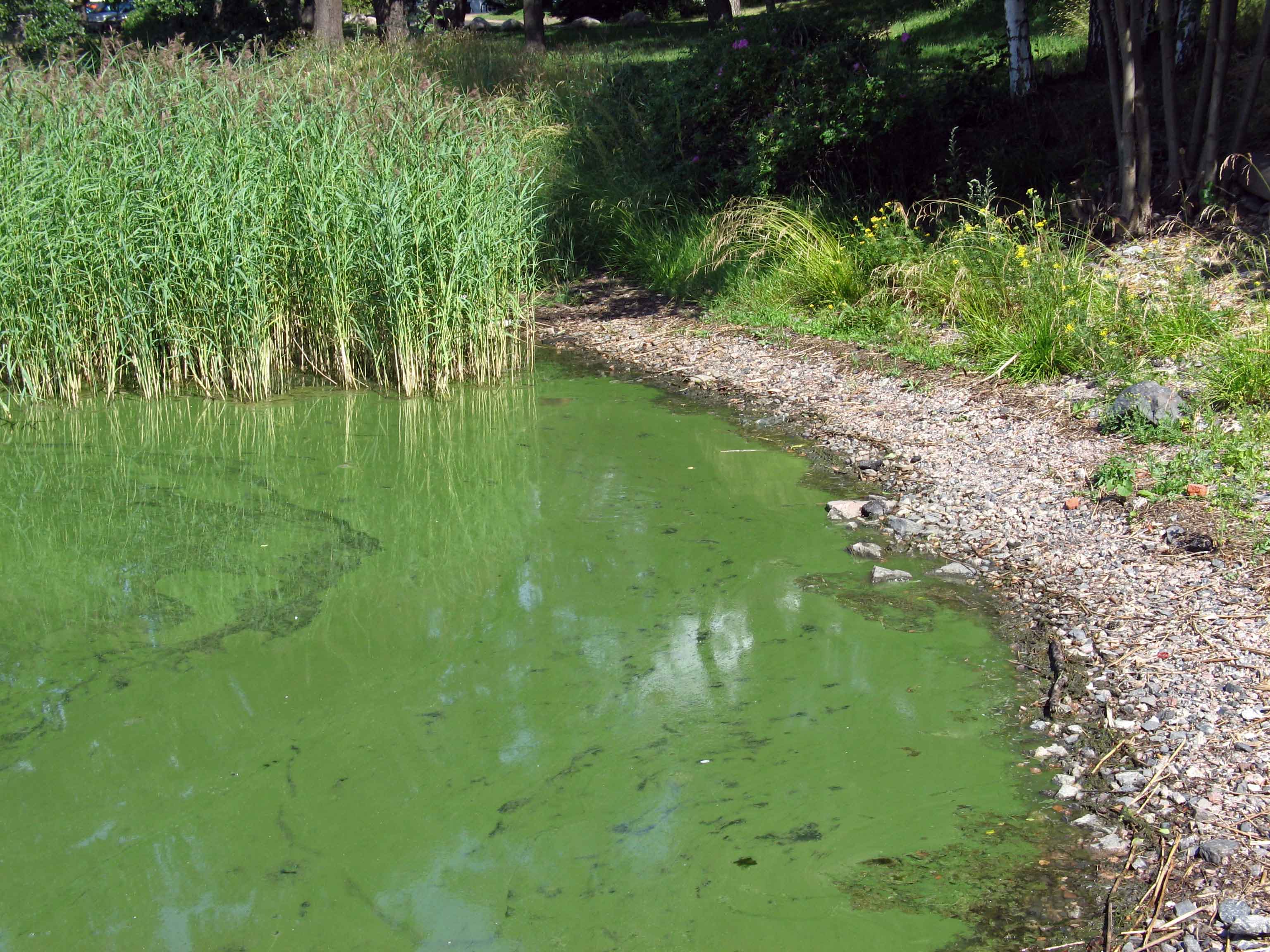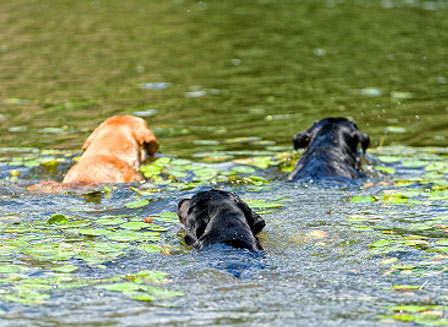Blue-Green Algae
Blue-green algae are natural organisms that are present in most lakes. Certain conditions – low water levels, limited water circulation, increased heat and light, among other factors – can cause the algae to bloom and, in some cases, release toxins. The most common toxins in the algae are Anatoxin-A, a neurotoxin, and Microcystin, which affects the liver. Scientists do not know what causes the algae to become toxic. Algae blooms could very well occur in one of Santa Clara County Park’s waterbodies.
Exposure to toxic algae, either through ingestion or skin contact, can cause rashes, skin and eye irritation, allergic reactions, gastrointestinal problems or, at high doses, serious illness or death, according to the California Department of Public Health. Several dog deaths around the state have been attributed to toxic algae poisoning in the past two years. As of March 2016, East Bay Regional Park District has reported four dog deaths due to algae blooms.
Blooms usually run their course and dissipate in a week or two, but rain storms and cold temperatures can speed up the process.
Swimming – by dogs or people – is not allowed in any Santa Clara County Parks. However, skiing is permitted on five of our reservoirs, which could put our recreational ski enthusiasts at risk if there is a bloom.
We encourage you to report any suspicious blue-green algae in any of our water bodies directly to either the Santa Clara Valley Water District at 408-265-2600 or www.valleywater.org or to Santa Clara County Parks at 408-355-2200.
It is always best to keep yourself, children and pets out of the water. Do not let your dog or horses drink the water. Consuming toxic algae can kill a dog in 30 to 60 minutes.
If you come into contact with suspicious algae, rinse skin with tap water after contact. Fish should be rinsed in tap water and the guts discarded.

